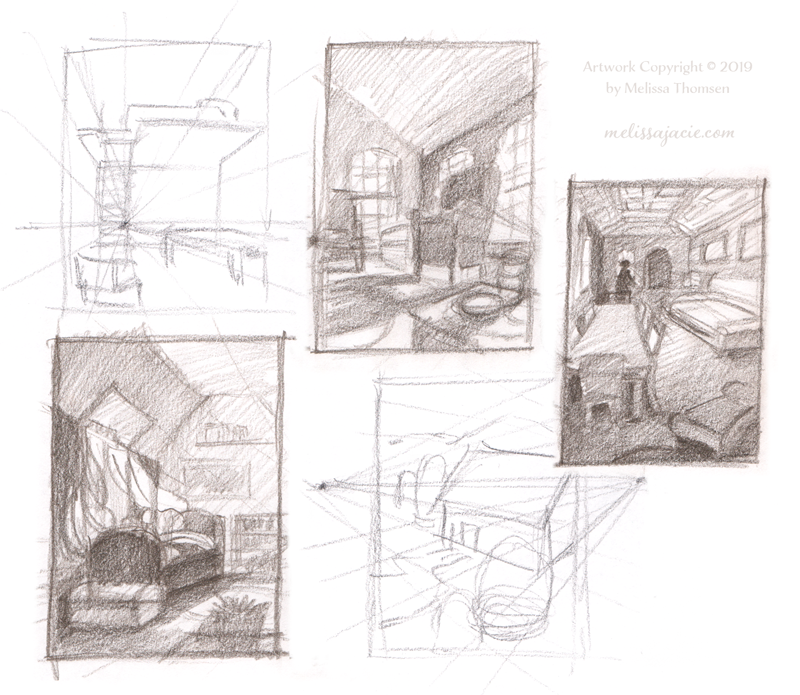
If you’re an artist, or a parent of an artist, perhaps you’ve heard the word “perspective” and it has made you a little nervous …or scared. You learned a bit about it some years back but it seemed so confusing you weren’t sure how it worked.
Perspective concepts are fantastic to know as an artist, and can be a great tool in coming up with illustration ideas! Let’s dive into this and see if we can make things understandable. (And if you have any questions, don’t hesitate to leave a comment or write me an e-mail!)
1. Horizon Line
First, let’s start with what’s called the horizon line. The horizon line is basically where our eye level is. So if we sit down, our eye level is in an entirely different place than if we stand up. One way to see this happen is to find a simple table.
Stand directly in front of it about three feet away and sit down. What do you see? Depending on how tall the table is, you may only see the legs and maybe a thin edge of the table top.
If you stand up, what happens to your eye level? Now you can see the top of the table and maybe only part of the legs. What just happened? Your entire viewpoint changed.
Extra Exercise: Try looking at a children’s book and guessing where the viewers eye level is supposed to be at. From where are we, the viewers, seeing what’s happening in the illustration? Are we sitting on a helicopter high up? Or, perhaps we’re hiding in the grass looking towards the scene.
2. Vanishing Point
Second, there’s the vanishing point. This is technically where things “vanish” to. For example, let’s go back to that table. When you stand directly in front of it, the sides of the of the table will point in towards each other as they go back. However, if the table was indefinitely long–stretching way out ahead of you (think of a train), you’d see it vanish eventually. And the two sides of the table, if it was indefinitely long–they will visually (not literally) cross right into each other, creating “the vanishing point”.
Extra Exercise: Think of a train, or a long, straight road. Watch for this the next time you’re in the car driving down the road. Notice how the road comes to a point ahead of you (if you’re able to see a long ways down the road). It’s “vanishing” to a point on the horizon.
Application
Okay, so now, what do we do with our horizon line and vanishing point? The vanishing point will sit on our horizon line. They will connect.
So think in real life again. You’re standing up in front of the table. Your eye level is higher than the table itself. Now, take a pencil with an eye squinted, and visually lay it on a side of the table. Imagine that the table continues to go back (as if it were as long as a train) where will it end up? Take two pencils and lay them visually against each side of the table and slowly follow the angle until the pencils hit the same spot. Ta-da! You’ve landed on the horizon line! And not only that, but you have the vanishing point for the table as well.
Now, if this seems clear as mud, let me know! :) It’s a really good concept to understand and it’s neat to see it happening in real life. Also, if you have any questions, don’t hesitate to ask!

